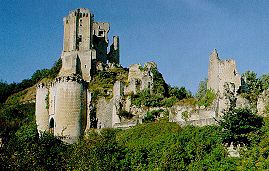 Signs of Zodiac
Signs of Zodiac Astrology and theology... The religious feasts are the main contents of the Calendars of Psalters or Books of Hours. Its illustration shows the typical activities of the seasons of the year in the Labours of the Month and the passing of astronomical time in the Signs of the Zodiac. Ever since man recognized some kind of regularity in the movement of stars and planets, he has believed that the celestial bodies influenced earthly events. Ideas, ultimately dating back to Babylonian times, persisted in the Middle Ages, and even today horoscopes continue to be drawn. In some regions of the world hardly a marriage is concluded without a serious look at the constellations. Christian theologians were of course most familiar with the astrological ideas of the Graeco-Roman world. These presented a challenge to their own ideas about the omnipotence of God, and they wrote many pages to reject what was unacceptable in their eyes.
go to the site:
www.kb.nl/kb/manuscripts/highlights/23O_uk.html
www.kb.nl/kb/manuscripts/highlights/23O_uk.html







